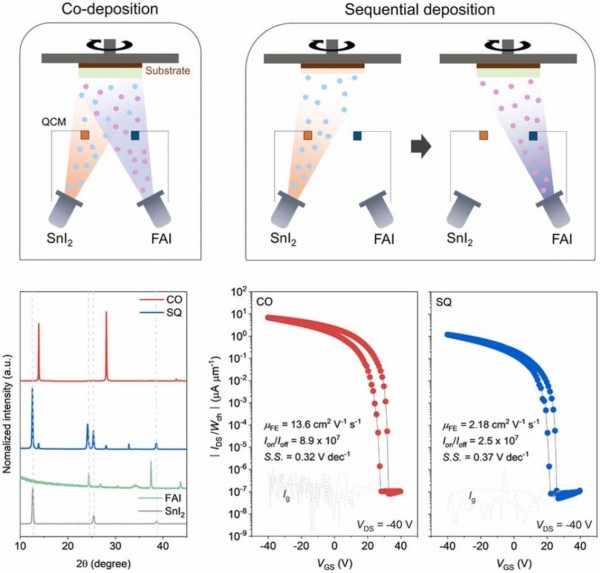Additive-free thermally evaporated tin halide perovskite transistors
- 저자
- Wonryeol Yang˚, Wantae Park˚, Youjin Reo, Soohwan Yoo, Sungjae Cho, Hyesun Kim, Sunmin Ryu, Yong-Young Noh*
- 저널명
- Material Science and Engineering: R: Reports, 168, 101141 (2026)
- 년도
- 2026
- Link
- https://authors.elsevier.com/c/1m42Q,L67mbpJE 36회 연결
- Link
- https://doi.org/10.1016/j.mser.2025.101141 29회 연결
[Abstract]
Tin halide perovskites have emerged as promising p-type semiconductors owing to their low effective mass and high defect tolerance. While early development of perovskite thin-film transistors (TFTs) was achieved by solution processing, their reliance on solvents and poor compatibility with high-resolution patterning hindered large-scale integration. By contrast, thermal evaporation offers a solvent-free approach with precise control over the thickness and composition, making it well-suited for scalable and industry-relevant fabrication. Herein, we report the development of additive-free, thermally evaporated FASnI3 TFTs and systematically investigate how the deposition method and precursor stoichiometry affect the crystallization behavior and device characteristics. Co-deposition enabled complete precursor conversion and (n00, n = 1,2,3)-oriented crystallization, achieving high mobility of ∼14 cm2 V−1 s−1, while sequential deposition leads to residual SnI2, (111)-oriented crystallization, and relatively low mobility of ∼2 cm2 V−1 s−1. Notably, these thermally evaporated films enable reliable switching behavior without requiring hole suppressors, owing to the intrinsic control over the carrier concentration. These findings underscore the importance of optimizing the deposition strategy and precursor stoichiometry to achieve high-performance tin halide perovskite TFTs and facilitate their integration into large-area electronic systems.
